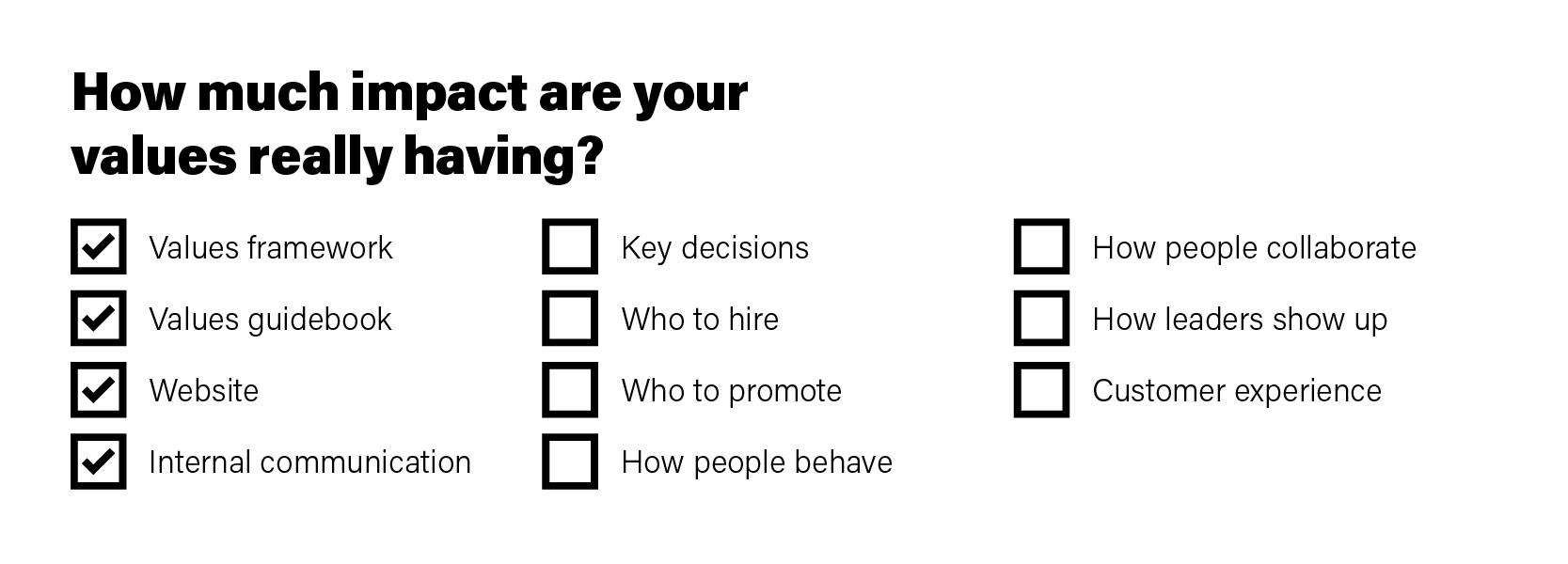Creating a values-driven culture
By Hafsa Aziz and Sarah Taylor-Forbes
During the 1990s, a new trend swept through the business world: large companies began publicly articulating their moral convictions in what became known as core value statements.
Inspired by Japanese firms like Toyota and Sony, which were celebrated for their high-quality products and solidarity-driven organisational cultures, Western companies were encouraged to adopt their own core values. Common themes included "teamwork" and "excellence," which were seen as the foundation for organisational success.
Over time, these statements evolved. With the rise of corporate branding, companies embraced dynamic concepts such as "joy" and "obsession." Scandals of the early 2000s, such as Enron and WorldCom, brought greater focus to values like "integrity" and "doing the right thing."
Fast forward to 2024, and core values across organisations appear strikingly similar. Regardless of industry, size, or location, values like teamwork, integrity, customer focus, and adaptability are almost universal. These reflect the basic requirements of working together effectively as a team.
Yet, the real differentiator today is not the values themselves — it’s the extent to which organisations genuinely live by them. Are these values driving decisions, shaping behaviours, and forming the backbone of your culture, or are they just words on a wall?

Are you a values-driven organisation?
Not unless your values are embedded into the very fabric of how you work, driving and informing every decision from the boardroom to the front line.
Not sure? Ask yourself these four questions.
- Can you recall your company’s values (without hesitating)?
- Do you understand what each value means for you and how you work?
- Have you seen behaviours that contradict these values?
- Do organisational decisions ever conflict with these values?
If you answered "yes" to questions 3 and 4:
- Are people held accountable when they act against company values?
- What needs to change so you can make decisions that align with your values?
Are your values actionable?
Defining your values is just the beginning. To make them actionable, they must be:
- Easy to remember: three core values is plenty.
- Easy to understand: avoid anything overly aspiration or vague. Instead of ‘excellence’, try ‘deliver with care’.
- Easy to act: highlight what these values mean in the day-to-day jobs, why it matters and what good looks like.
“Focus on the user and all else will follow" is a great example from Google. It’s memorable, actionable and aligns clearly with their mission.
Don’t just roll your values out; embed them
Introducing values is a little like learning a new language. It needs practice, repetition and time to master. But the real work isn’t launching them; it’s embedding them.
A launch is a one-off event, whereas embedding calls for ongoing communications and interventions where people actively practise the values and see them in action. These might include leadership workshops, team engagement and effectively making the learning a part of daily conversations, formal and informal.
How can you measure success?
You need to go beyond engagement metrics and observe how your values are internalised. Here’s what you need to ask yourself regularly:
- How often are the values referred to in meetings?
- Are employees raising concerns when actions contradict your values?
- Are leaders consistently modelling the values?
Values that drive decisions
A huge barrier to organisations living their values is misalignment in leadership and processes. If you want your values to become part of your organisation's DNA, they should influence decision-making at every level.
Here are some practical ways you can start putting your values to work:
Hiring
Construct interview questions and assessments around your values. If ‘collaboration’ is a core value, ask candidates to tell you how they’ve built strong team relationships.
Performance management
Include values as a key element of performance appraisals, evaluating employees not just on results but how they achieve them.
Leadership decisions
Train your leaders to reference your values explicitly in decisions. For example, if they’re prioritising projects, tie the choice back to ‘customer focus’ or ‘integrity’.
Embedding values isn’t just about integrating them into people processes, but true embedding is also impossible without aligning organisational processes and leadership behaviours with the values. Embedding values isn’t just about integrating them into people processes; true embedding is impossible without aligning organisational processes and leadership behaviours with the values.
Moving from words to action
Core values aren’t just statements; they’re commitments. The true test of a values-driven organisation is in how well these values guide behaviours, decisions and relationships.
By successfully embedding values, organisations build trust, accountability and a sense of purpose. This, in turn, drives higher engagement, stronger performance and ultimately, long-term success.
